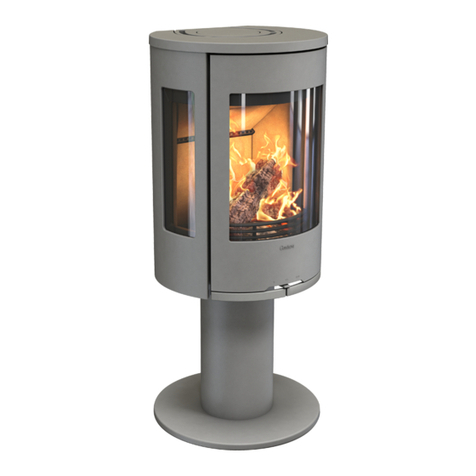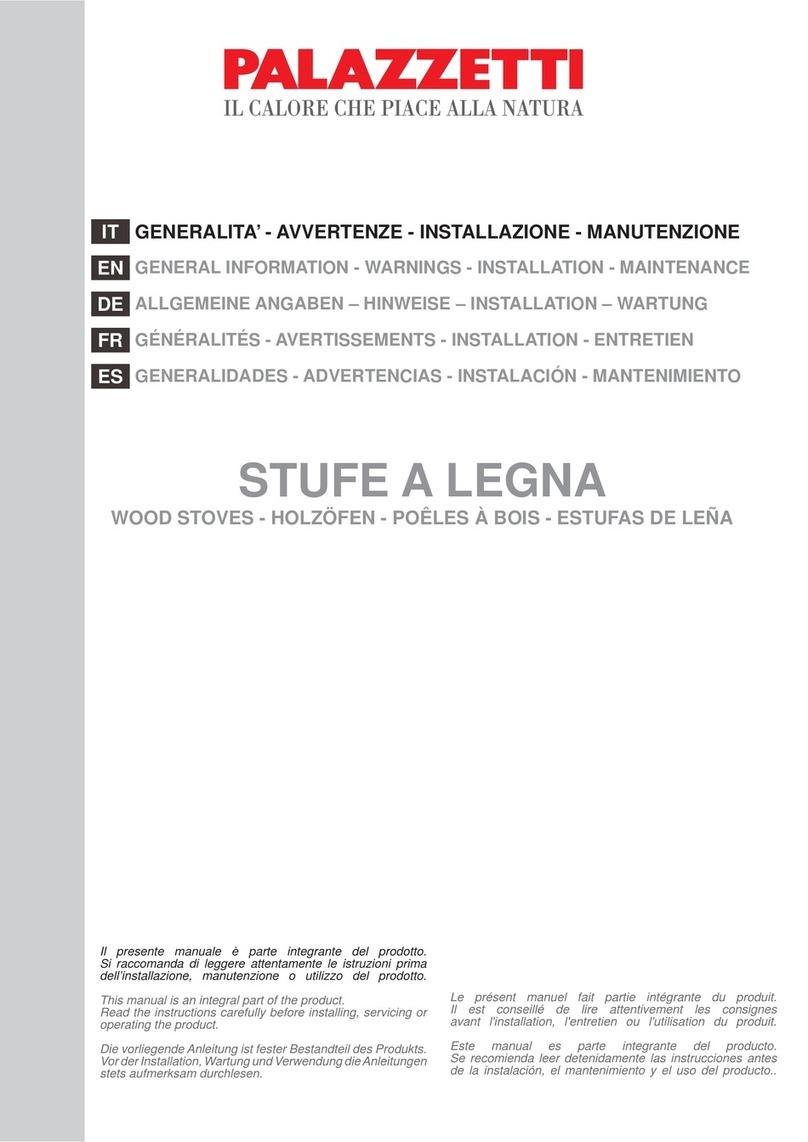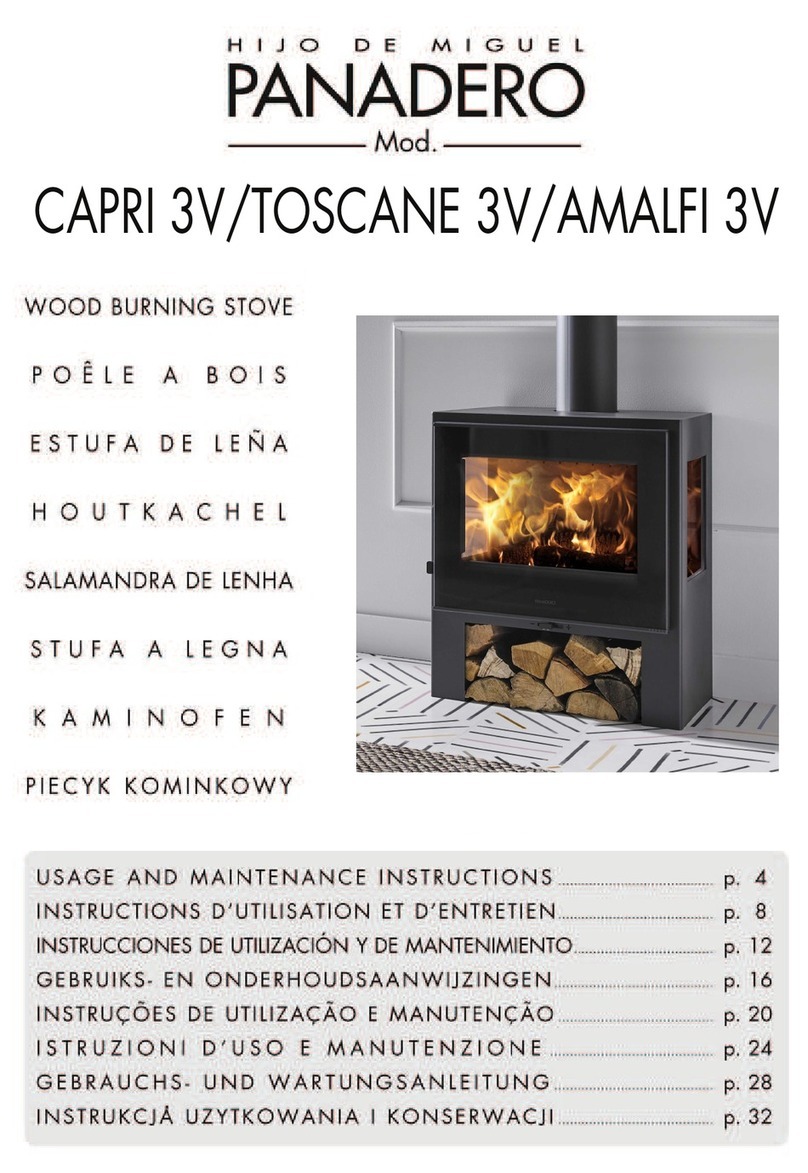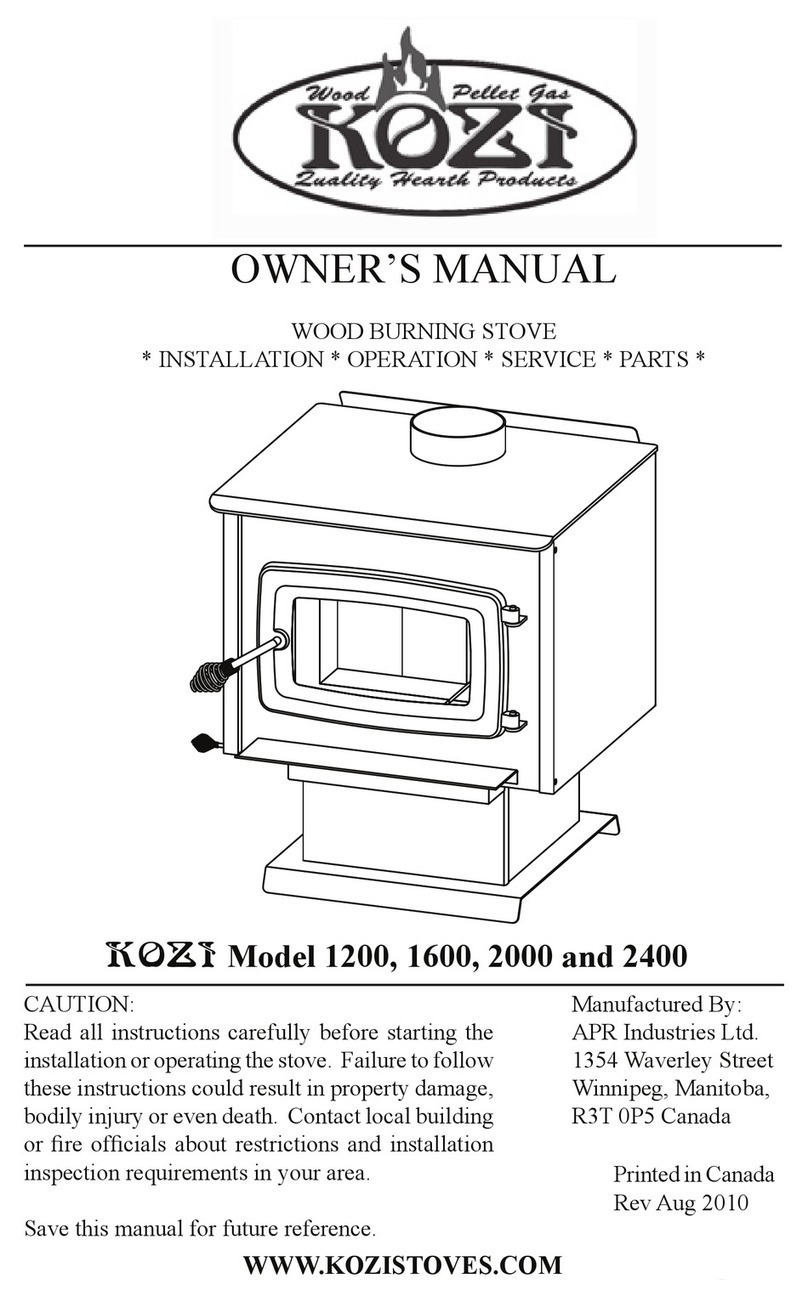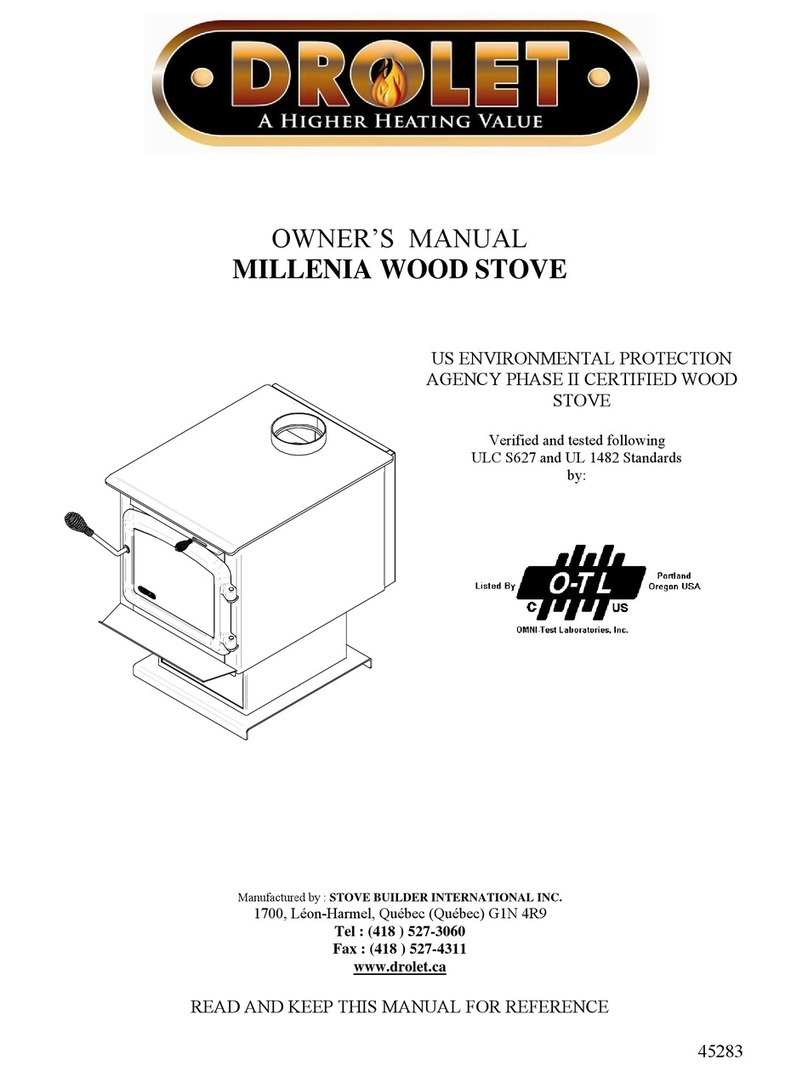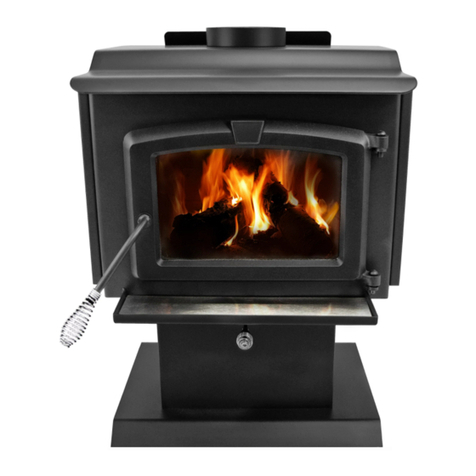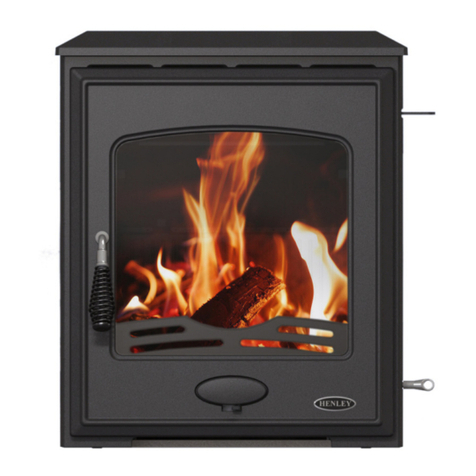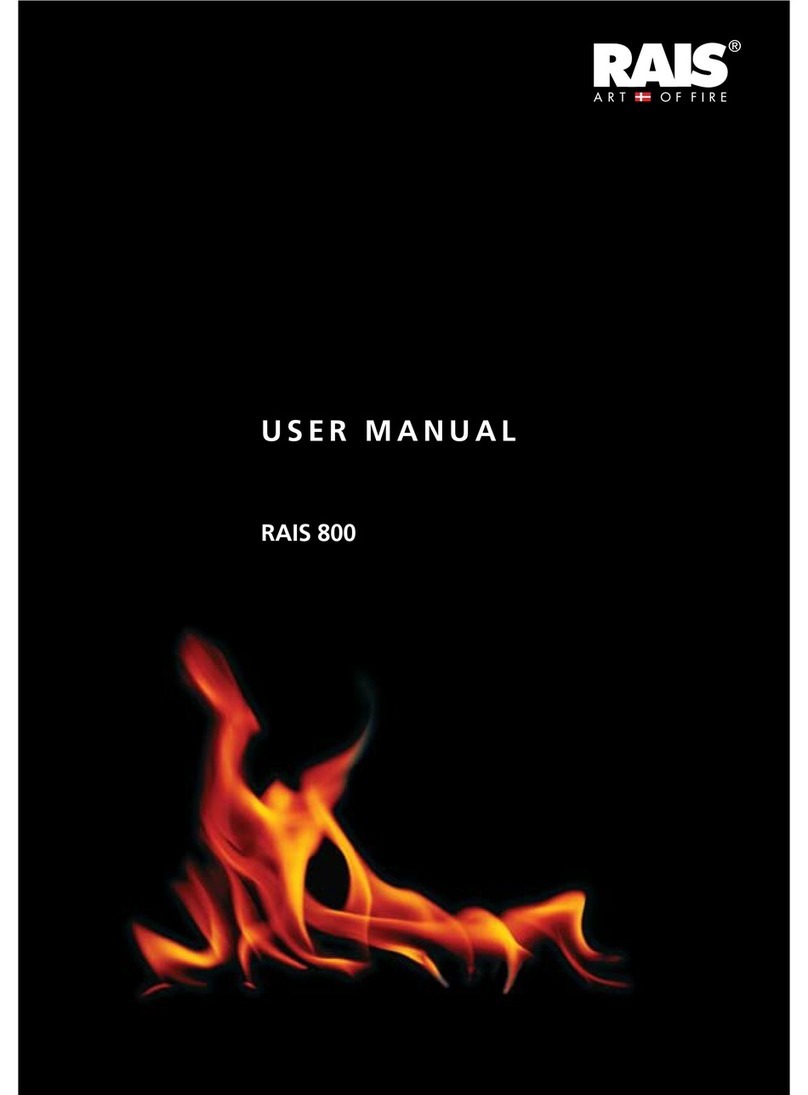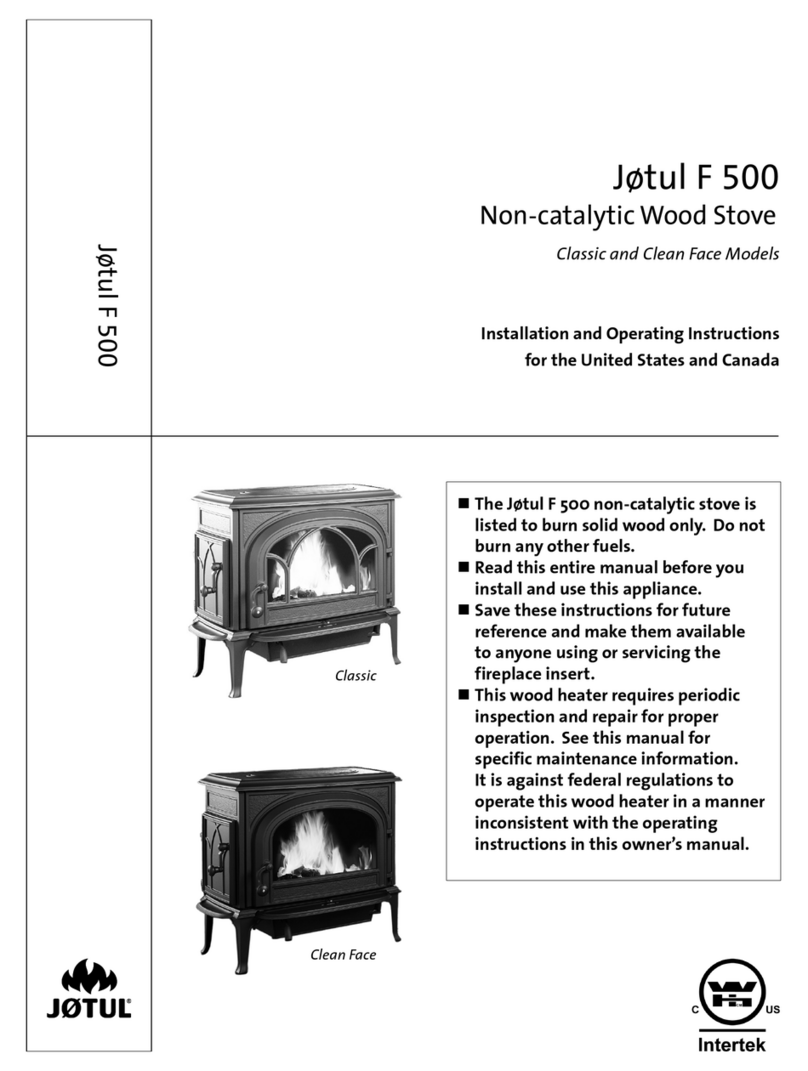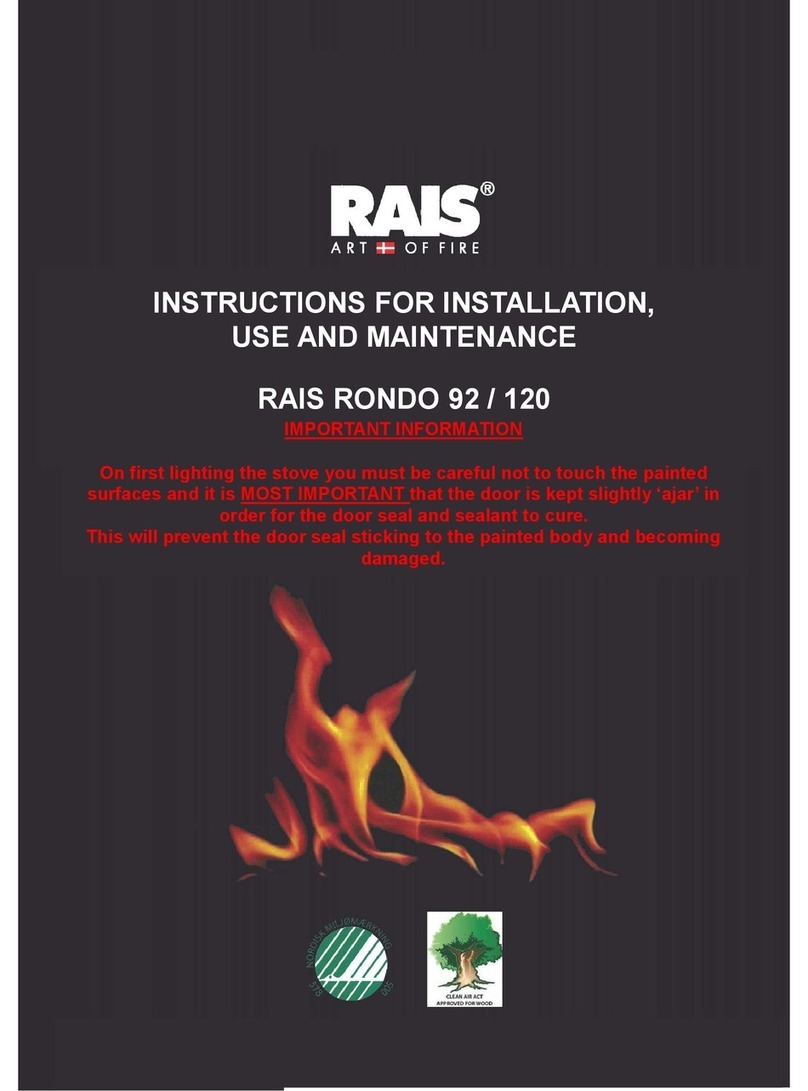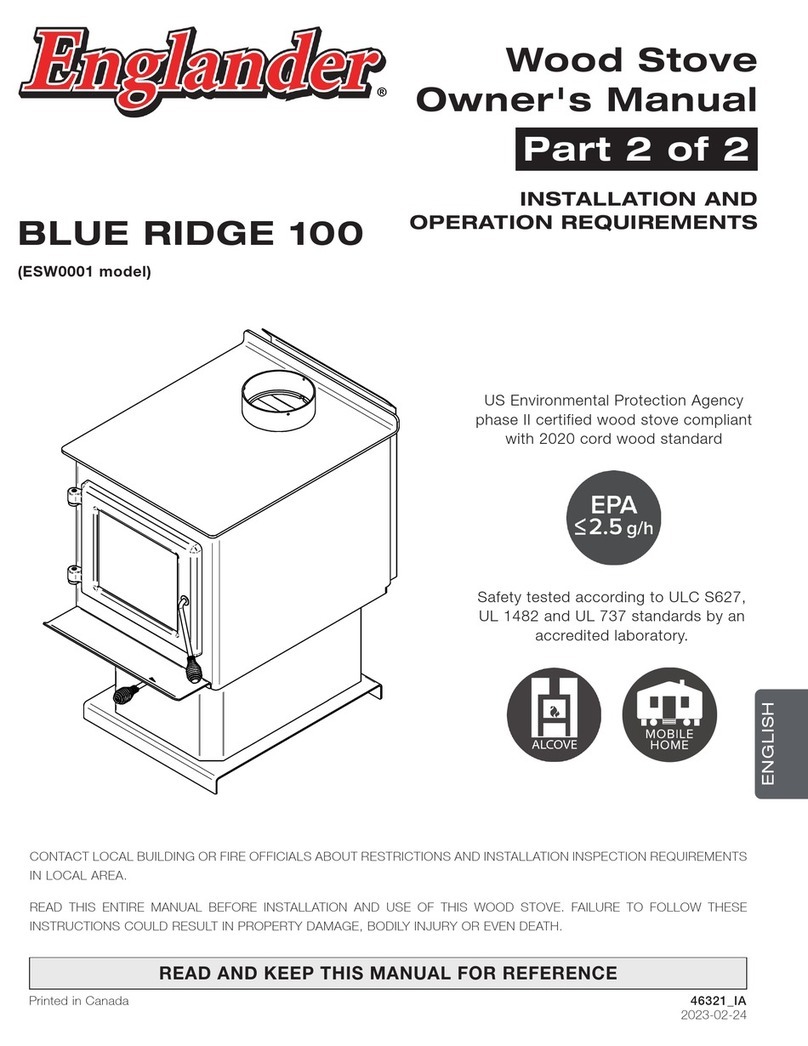
6
Figure 7
good draft. Next, place several more balls of paper as you did
for the pre-burn. Then place kindling wood loosely on top of
the paper, add four or five wrist-sized pieces of wood to the
top of the kindling, and light. Allow the door to remain open
about 2" for several minutes to allow the kindling to begin to
burn. Close door and allow to burn briskly. Slowly add larger
pieces of cord wood to the firebox as necessary. Once a fire
is well established, the air control lever may be pushed in
slowly until the desired burn rate is achieved. Be careful to
retain a flame as this will produce clean combustion and
clean glass.
3. When using split wood do not place flat side down as the
air must be drawn around and through the pile of wood.
Allow the fire to burn briskly for 30-45 minutes per day with
the door closed and the dampers open. This permits the
stove to reach optimum operating temperatures and will
reduce the formation of creosote in the flue. As you burn your
stove you will become more familiar with your individual start-
up requirements.
The stove may be harder to start the first few times, but will
become easier as a few ashes build up in the bottom of the
firebox. This allows the air to get under the fire better.
3a. High Altitude Starting Instructions:
Follow all steps above (l through 3) however, due to the
decreased density of oxygen supplied in a given volume of air
at higher elevations it will be necessary to allow the stove to
burn for a longer period of time with the air control rod pulled
all the way out. It may also be necessary to use more kindling
material in order to get a well-established fire going. As you
use your stove you will become more familiar with your
individual start-up requirements.
4. The best efficiency, heat control, and cleanest glass door
is achieved through proper use of the draft control under the
ash lip. Once the fire has burned briskly for 10-15 minutes
you can then regulate the fire speed and intensity with the
draft control.
CAUTION: Never open you air draft control suddenly if the
fire has been smoldering for some time and no flam e is
visible. The sudden influx of air can cause ignition of wood
gases which could create a loud report.
By using this control you will not only learn to regulate the
temperature levels in your home but also be able to keep
your glass door cleaner. Less air means slower fires and less
heat, usually used when away from the home or for overnight
burning. More air means faster, hotter fires and greater heat
output, usually used when starting your stove in the morning.
The exact setting of this control depends upon many factors--
chimney height, wind velocity and direction, type of wood and
moisture content and desired home temperature.
W ith practice you will soon learn to keep your home at a
comfortable temperature level. Your Sierra Stove is specially
designed to burn clean with a constant air flow.
Therefore, do not allow your stove to smoulder for long
periods of time as this will cause excessive smoke emissions
and creosote deposits in the chimney. The glass will also stay
cleaner with small, hot fires rather than slow, sm okey,
smoldering fires.
5. Refueling: Before refueling your stove, pull the air control
rod all the way out. This will admit maximum combustion air
to the stove and ensure that no unburned gases remain in
the firebox. Next, open the door slowly and verify that ashes
do not block flow of air from the underfire air blast located
just in the middle of the hearth just in front of the door
opening. Then rake the coals level, and lay the new fuel
charge on top of these glowing coals. Close the door slowly
and allow the wood to burn briskly for a few minutes. Once a
fire is well established, the air control lever may be pushed in
slowly until the desired burn rate is achieved. Be careful to
retain a flame as this will produce clean combustion, clean
glass and highest efficiencies.
6. When ashes get 4 to 5 inches deep in the firebox, and
when the fire has burned down and cooled, remove excess
ashes. Leave about an inch of ash in the bottom of the
firebox to help maintain a hot charcoal bed.
OVERNIGHT BURNING
To hold a fire overnight, load the firebox with a full supply of
wood which has a minimum diameter of six inches. Wood
still in "the round" will burn longer than split wood. After
experimenting with the slide draft for a few days, you will
discover the correct setting for your home. If the fire is out in
the morning and wood is burned up, open the slide draft a
little more the next night.
TIPS ON FUEL
Fuel Sizes: EF2100 takes 17" to 18" wood front to back. The
ideal fuel load is about 15 lbs. Producing about 11,000 to
42,900 Btu/Hr.
Fuel Preparation: W e recommend that you burn dry well-
seasoned wood. If you buy green wood, season it for one
year to eighteen months before using. Those who ignore this
advice and try to burn green wood will have less efficient,
more polluting fires. They tend to have dirty chimneys and get
inadequate heat from their stoves, as great amounts of heat
are required to "boil-off" the extra moisture in the fuel.
With experience, you can spot the difference between green
and seasoned wood. Seasoned wood often shows cracks
radiating outward from the heart toward the bark, like spokes
in a wheel. Green wood will not show this pattern of cracks,
and is considerably heavier. When two pieces of green or
wet wood are struck together sharply, the resultant sound will
be a dull thud.
"Hard" wood (oak, maple, ash, nut trees, etc.) is better for
overnight burning than "soft" wood (fir, cedar, pine, spruce,
etc.) PLAN AHEAD: PUT IN NEXT YEAR'S WOOD NOW!
Creosote Formation and the Need For Removal
Unseasoned or wet wood contains large amounts of
moisture. W hen this wood is heated in the fire, the water is
vaporized and driven off as steam at about 212 to 300
degrees Fahrenheit. As the temperature of the wood reaches
300-600 degrees Fahrenheit the flammable liquid in the wood
fiber cells is vaporized and it too is driven off as a steamy
smoke.
If the temperature is high enough and there is a sufficient
amount of oxygen present, the steamy flammable wood
gases will ignite and burn. The burning of these gases is
what is referred to as "secondary combustion" and appears
as the rolling orange flame above the wood.
When there is an insufficient amount of either heat or oxygen
present in the stove, this wet and steamy smoke does not
ignite and burn. Instead it is drawn through the exhaust vent
and into the chimney. As this steam begins to cool down in
the flue it condenses as droplets of moisture on the inside


